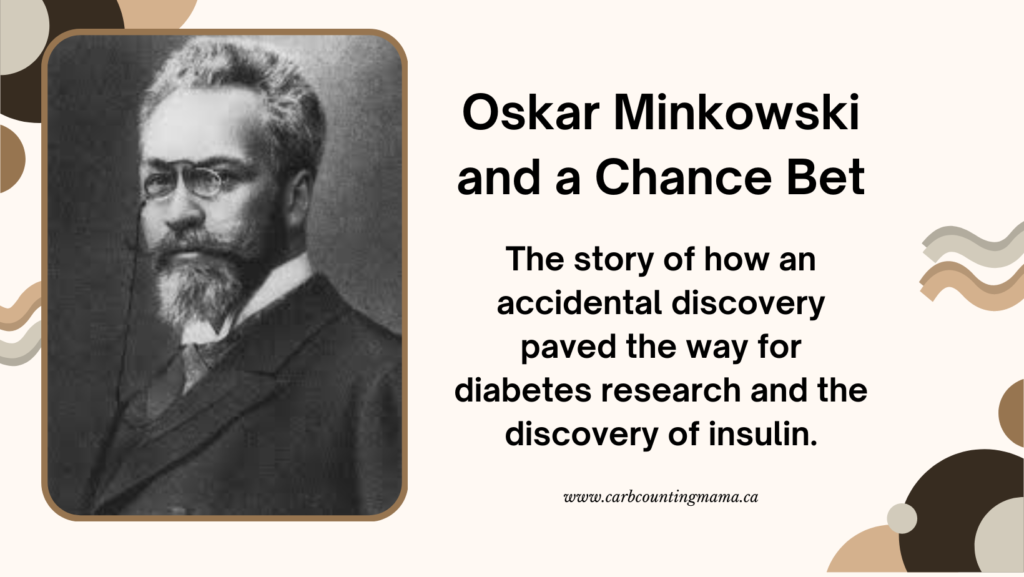Oskar Minkowski was a German physiologist who, in the late 19th century, conducted research on diabetes that would eventually lead to the discovery of insulin. As important as his research was, it’s the way in which he made the discovery that was quite peculiar. A chance meeting and a friendly bet between Minkowski and his colleague Joseph Von Mering is what changed everyone’s understanding of diabetes.

At the time, diabetes was a poorly understood disease. Scientists and physicians believed that it was caused by a dysfunction of the liver, stomach, or kidneys.
Minkowski was working under Professor Bernard Naunyn, the leading authority on diabetes in Germany, as an assistant when he visited Hoppe Seyler’s Institute to find some books in the library.
While there, he ran into Von Mering, who was trying to figure out the problem of fat absorption in diseases of the pancreas. Minkowski had thoughts on how Von Mering might be able to solve his problem.
The two men got to talking, and Minkowski suggested removing the pancreas entirely. Von Mering didn’t believe it was possible to remove the pancreas without killing the patient (a dog in this case). Minkowski was certain that it could be done and that he could do it. So, they bet on it and got to work.
An accidental discovery
When they decided to try a pancreatectomy on a dog, Minkowski and Von Mering had no intention to study diabetes or carbohydrate metabolism. Minkowski simply wanted to do it to prove that he could do it. It was a matter of ego for Minkowski, who was well-known for his dexterity and his surgical ability.
They left the library together and Minkowski performed the surgery that evening. He successfully removed the dog’s pancreas without killing the dog.
Of course, without a pancreas, the dog developed severe symptoms of diabetes. It started urinating on the floor even though it had previously been housebroken. When Minkowski realized that the dog was exhibiting signs of diabetes, he tested the dog’s urine and found it contained 12% glucose.
At first, Minkowski thought that maybe something Von Mering had done to the dog prior to the pancreatectomy had caused these symptoms. So, he duplicated the experiment on 3 more dogs. All of them also developed diabetes.
Von Mering and Minkowski had unintentionally stumbled on one of the most important discoveries of their time. In 1889, their experiments showed the medical community that diabetes is a disorder of the pancreas. Not the liver, stomach, or kidneys.
Further experiments
Minkowski experimented further by implanting a portion of a pancreas back into dogs that had their pancreas removed. He found that this procedure prevented hyperglycemia. And when the pancreas was removed again, the diabetes returned.
This discovery pointed dozens of physicians and scientists in the right direction. People were now searching specifically for a secretion of the pancreas that could cause, or prevent, diabetes.
This accidental breakthrough by Minkowski and Von Mering paved the way for future discoveries, which would eventually lead to the discovery of insulin.
For this, the first major breakthrough in understanding the disease, he is the namesake of the Oskar Minkowski Award, presented annually by the European Association for the Study of Diabetes.
It would be another 30 years before insulin is discovered and used to treat people with diabetes. But without this key discovery by Minkowski, it likely would have been a lot longer.
For more tips and stories about T1D, join the Carb Counting Mama email list, and make sure to head over to the Carb Counting Mama Facebook page and “like” it.
Leave a Reply